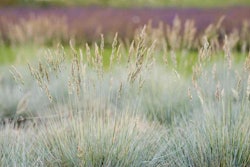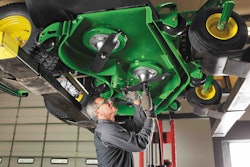
Most fall gardens are carried over from ones used in summer, and vegetables like tomatoes, okra, eggplants, and peppers, if cared for during the summer, will continue to produce until the cold sets in.
Preparation and planting
If your customer has an existing garden, it’s time now to get it ready for fall planting. Start by removing plants that aren’t performing anymore or those that have fallen prey to diseases.
Take this time to remove any weeds that may have made an appearance, and check the soil to see if it could benefit from any additional organic matter.
A good fall garden is meant to be more than just the remnants of what was planted in the summer, which means you’ll need to talk to customers about other vegetables that can be added in this season.
Many of the cool-weather vegetables planted in the spring will grow and produce better in the fall because they’ll mature as the weather cools.
If your area has experienced a fair amount of wet weather this season, resulting in a delay of planting early spring vegetables, having a fall garden can give your customers a second chance.
Seedlings and transplants
When working with young seedlings and germinating seeds, the hotter conditions of July, August and September can sometimes prove harsh. The survival of these young plants can be improved by watering a day or two before planting to give seeds moist soil, as watering after they are planted can cause the soil surface to crust and pack.
After planting the seeds in this moist soil, cover it with moistened, non-crusting material, such as a mix of peat moss and vermiculite or even composted sand and sawdust. To establish seedlings and germination, keep the surface moist.
For transplants, start these vegetables off in individual containers, as setting these plants out without disturbing the root systems can help reduce transplant shock. Be sure to keep these plants out of the sun for a few days.
When choosing what to put in your customer’s fall garden, be sure to pick out maturing varieties since growing days will be limited. To allow for shorter, cooler days, also add on about two to three weeks to maturing time on seed packets. Be sure to plant seeds ¼ to ½ inch deeper because of warmer soil temperatures.
According to Right Plantz, the shorter days of fall tend to stress vegetable plants. It’s important to pick any ready vegetables promptly, as leaving ripe ones on the plant signals to the plant that there is no longer a need to produce.
Some of the most common fall vegetables are pumpkins, carrots, broccoli, beets and potatoes, but a few others you can suggest to your customers are arugula, parsnips, radishes and cauliflower.
When grown in the spring, arugula can get a little too warm and begin to flower and seed too soon. When grown in the fall, however, the cool temperatures allow the leaves to fully mature and produce a richer flavor.
Parsnips should be planted directly into the garden, and they can be slow to germinate. Before the ground freezes, advise customers to dig them up and store them in the refrigerator through the winter.
Along with beets and carrots, radishes will have a better flavor when grown in the fall. They are quick growers, so your customers might have time to succession plant more than one round about every two weeks.
Cauliflower will produce tight, tender heads in the fall, and it does exceptionally well in this season. Begin this crop in mid-summer, though, because they will take longer to mature. If your customers want to get a head start, cauliflower seeds can be grown indoors sooner and the seedlings can then be transplanted.
These fall vegetables will need to be fertilized just as much as spring and summer ones, but don’t count on the fertilizer applied in the spring to last throughout summer and fall. Before planting, be sure to fertilize and then add in more along the way if needed.












